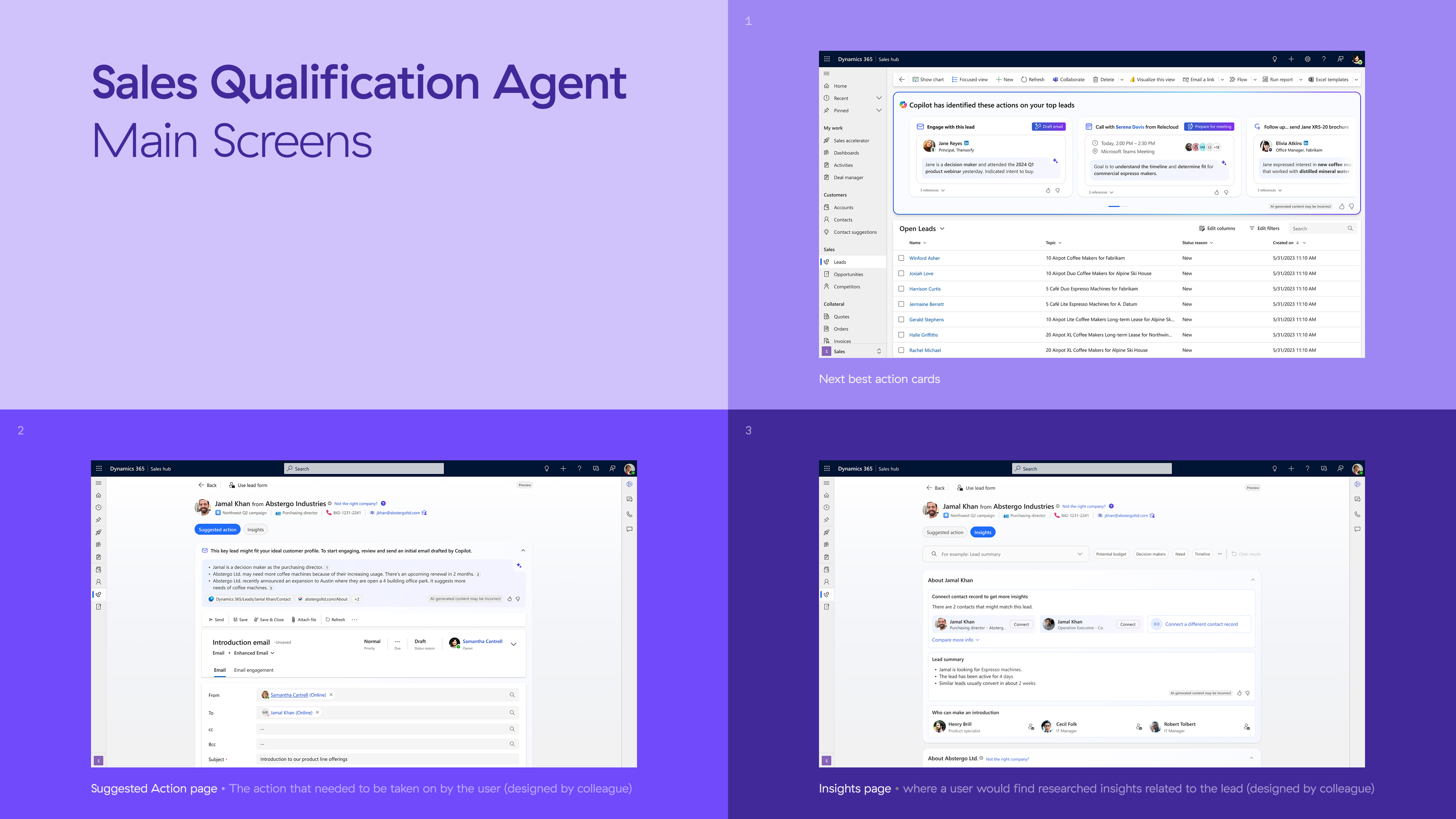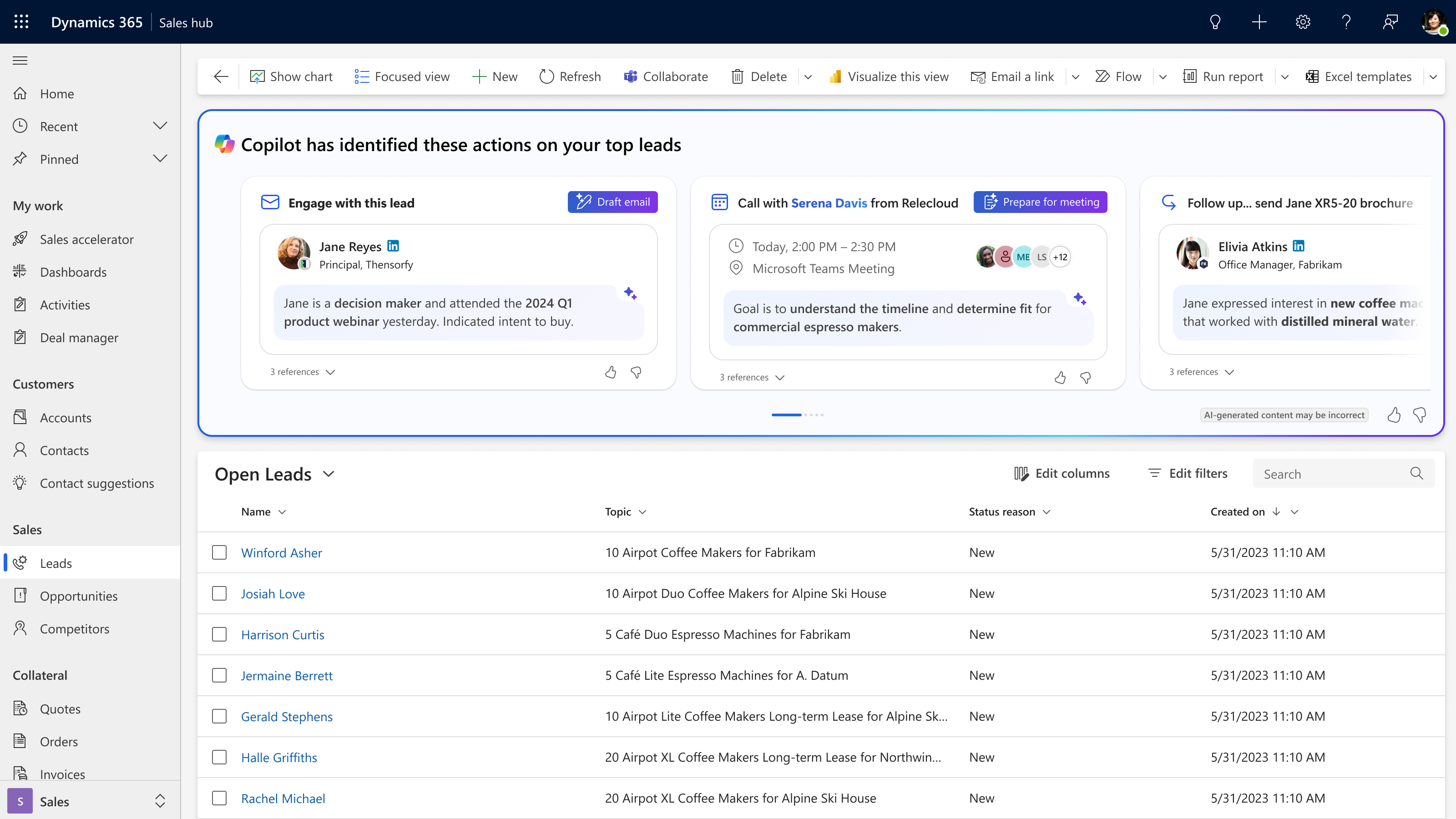




As the lead product designer in a team of three, I helped create the Sales Qualification Agent, one of Microsoft’s first AI-powered agents.
This agent automates lead research, identifies the most promising prospects, and drafts personalized emails—freeing up sales teams to focus on closing deals.
Designed for Microsoft D365 Sales, a CRM competing with Salesforce, the goal was to streamline lead management and strengthen customer relationships.
Sales teams waste countless hours sifting through massive lead lists, trying to identify high-value prospects. The process is slow, repetitive, and keeps them from what really matters—building relationships and closing deals.
We set out to solve this by designing an AI-powered agent that automates lead qualification, prioritizes the most promising opportunities, and drafts personalized outreach—helping sales teams move faster and focus on conversion.
Our primary users were Sales Representatives and Sales Operations Managers — the people responsible for identifying and managing leads.
However, there was a key uncertainty: who should configure the AI agent? Was it the Sales Ops Manager, who understands the sales process, or someone from IT, who has deeper technical expertise? This lack of clarity influenced our design decisions, ensuring flexibility in setup while maintaining ease of use for both roles.
We had a tight four-week timeline to design and hand off the Sales Qualification Agent to engineering, ensuring they had enough time to build and ship it on schedule.
This constraint required rapid decision-making, efficient collaboration, and a focus on high-impact design choices to maximize the agent’s effectiveness while staying within the deadline.